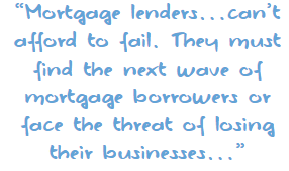Join us for our next sheCall on Wednesday, Dec. 12th, 2018, at 8:30- 9:30 AM PST. Jessica Lautz, Director, Demographics & Behavioral Insights at National Association of REALTORS, will be featured and interviewed on our NAWRB sheCall: Profile of Single Female Buyers & Sellers. To listen, call in at 949-209-6642, and don’t forget to RSVP by emailing info@nawrb.com.

Know an Incredible Woman Preserving the
Quality of Life During COVID-19?
Submit your story today!
Read More

Consulting & Branding Opportunities
Grant your business access to insider,
proven knowledge to improve the quality of your procured
services and maximize business performance.

If you need D&I
Contact Us!
A Team Focused on Bring Diversity and Inclusion to Every Level
Learn More

#1 Top Real Estate Influencer
Desiree Patno
Diversity & Inclusion, Quality of Life, Know the Rules of the Game ®
Your Next Event
Grow Your Business
NAWRB: An SBA Resource
NAWRB is listed as a women-owned business resource for the SBA.
Check It Out
NAWRB Aging Population
Help Protect Elders
from Financial Abuse
Over $36.5 billion a year is lost annually in the U.S.
Prevent Financial Abuse

Women's Homeownership:
Dream. Stability. Sanctuary.
Life often presents us
with unplanned disruptions.

AI Technology
with
a Human Touch
Is
The Perfect Balance


NAWRB Women's Global Resource Center
A women’s depository for vendors & clients to grow their diverse spend & increase women’s employment at all levels within the housing ecosystem.

Tag Archives: NAR
Catching the Next Wave of Mortgage Borrowers
Sometimes, a transition calls for a radical change, though some people try to avoid such shifts because they can be jarring. The sudden loss of refinance business has been that way for many lenders, and it will get worse in the future. How lenders respond to this transition into a purchase money market will set the winners apart from the rest.

The approaches loan originators will take to solve this problem will vary. Many will double their efforts to attract new refinance business, as writing that business has become their core competency. Others will seek out more purchase money business, pulling out old playbooks and relearning the rules of building strong business referral networks. A few will look for the radical change and catch the next wave of mortgage borrowers.
Speaking of catching waves, when learning to surf, even when you fail, you still learn something about yourself and become better for it. Mortgage lenders, on the other hand, cannot afford to fail. They must find the next wave of mortgage borrowers or face the threat of losing their businesses, which is all the more reason for them to consider the radical change.
Increase Your Sales as a Renovation Realtor
 Recently, the National Association of REALTORS® (NAR) reported that the highest home buying demand in years is being stifled by tight inventory. In this article, I will demonstrate how you can increase your available inventory by embracing homes in need of renovation.
Recently, the National Association of REALTORS® (NAR) reported that the highest home buying demand in years is being stifled by tight inventory. In this article, I will demonstrate how you can increase your available inventory by embracing homes in need of renovation.
If you are already using renovation loans as a tool to sell more of your listings or to find homes for your prospective buyers, congratulations, you are reaping the benefits of these creative and game-changing loan programs. If not, 2017 may be your year to explore adding a renovation loan strategy to your business plan and increase inventory and sales.
Before we discuss an implementation strategy for using renovation loans, let’s first define what a renovation loan is and the specific loan programs that are available.
What is a renovation loan?
A renovation loan, simply, is a loan that is based on the “after-improved value” of a property where the improvements will be made after the closing. The after-improved value is established by the appraiser, who is given the plans and specifications for all repairs, improvements and additions to the property. Virtually any improvements a buyer could need or want to make are allowed, as long as it is attached to the property and adds value.
The loan-to-value is based on the lesser of the after-improved appraised value or the acquisition cost plus the amount of the renovations. At closing, the funds for planned improvements are deposited into an escrow account that will be disbursed upon inspection of and completion of the work. The project period is typically limited to six months or less.
The two most commonly used renovation loan programs are the FHA 203(k) Rehabilitation Mortgage and the Fannie Mae HomeStyle Renovation Mortgage. Both programs offer fixed-rate financing with terms up to 30 years.
When determining which program is best for your clients, you should look at their credit profile and required loan amount first. The FHA program typically has lower credit score requirements and the Fannie Mae program offers high balance loans.
As with non-renovation loans, FHA requires a 3.5 percent down payment and Fannie Mae requires a 5 percent down payment, making renovation financing a viable option for the first-time homebuyer.
Continue reading →
How to Get Your Economic Groove On, Part 2
While the Internet offers a plethora of primary data sources that can be tapped to gain a better understanding of economics and the housing market, along with them come even more sites offering interpretations of those primary data sources. While some of these sites may seem to serve an educational purpose, and in fact be helpful in navigating the complex world of economics, be wary of any overt or hidden agenda. It is a simple fact that in our capitalist society most internet sites exist to make money for some individual or industry; be cognizant of this fact any time you are reading interpretations of primary data.
For example, in the NAR news release on September 2016 existing home sales, Lawrence Yun, the NAR chief economist is quoted as saying, “Inventory has been extremely tight all year and is unlikely to improve now that the seasonal decline in listings is about to kick in. Unfortunately, there won’t be much relief from new home construction, which continues to be grossly inadequate in relation to demand.”
That inventory is too low to support demand is not data—it’s interpretation of data. I, for one, have provided a different interpretation of this data. I believe and have provided substantial, evidence-based analysis that housing demand is not strong and low inventory is not holding it back. We had more annual monthly supply inventory from 2012-2016 than any period from 1999-2005 when interest rates and sales were higher. Interest rates have been under 5 percent since early 2011 and still the demand for both new and existing homes has been light. My recommendation: absorb the data, read the various interpretations, then think it through for yourself.
Continue reading →
Women’s Housing Growth: Winning in Heels
Globally, women are finally entering into boardrooms without having to knock, and they are not just there to serve the coffee. We are managing businesses, large or small, employing multiple solutions without trepidation, and jack hammering every glass ceiling in our way, or at least taking a shot at it. We are standing up for our truths, flaunting our power suits, high heels and unique personalities without apology. In 2015, according to the National Architectural Accrediting Board (NAAB), 44 percent of the graduates in its accredited college program were women. The 2016 National Association of Realtors (NAR) Member Profile reveals that women comprise 62 percent of Realtors in the U.S. market, 21 percent also hold broker licenses and 16 percent hold broker associate licenses. Additionally, women in real estate are no longer limited to salesperson roles, but are builders, welders, roofers, plumbers and environmental assessment experts. It is important to explore just how difficult the journey has been, and to celebrate the fact that we continue to face our challenges head on, impacting our industry sectors positively just by taking up and owning our spots.

At birth, three words determined your life for the foreseeable future—“It’s a girl”—and your journey began. Do you get an education? Do you attend the same schools, participate in the same activities and take the same classes as the male siblings in your family, or do your parents provide you with less, expecting you to grow into a docile young woman who should be seen and not heard? Hopefully the former applied in your case, and off to school you went, pink backpack, pretty dress and all, and life as you knew it changed forever.
According to a study conducted by the Harvard Graduate School of Education’s Making Caring Common Project, the “glass ceiling” concept is identified as early as middle school, with girls being
multiple times less likely to gain acceptance into leadership
positions, even by other girls in their grade. One of their most surprising findings was that 23 percent of girls preferred a male student in leadership, and only 8 percent preferred a female leader. Conversely, male students were 40 percent more likely to prefer a male leader, and only 4 percent were more likely to prefer a female.
Continue reading →

 Login
Login






